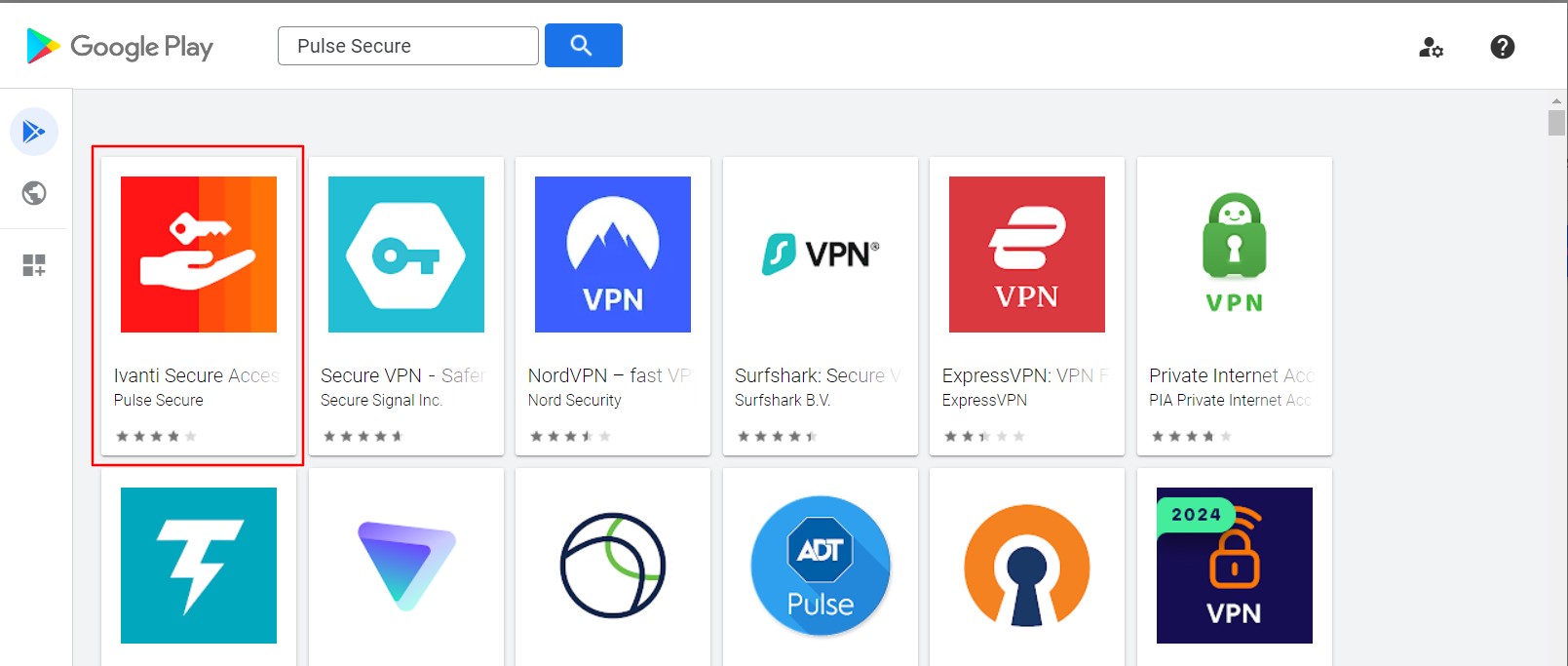Configure Pulse Secure on Android
- 13 Aug 2024
- 2 Minutes to read
- Print
- PDF
Configure Pulse Secure on Android
- Updated on 13 Aug 2024
- 2 Minutes to read
- Print
- PDF
Article summary
Did you find this summary helpful?
Thank you for your feedback!
Scalefusion and Android for Work make it easy for you to configure Pulse Secure VPN (Ivanti Connect Secure) on your managed Android devices. Follow the guide below to configure Pulse Secure.
Before you Begin
- Complete Android for Work Setup in Scalefusion Dashboard.
- Enroll your corporate-owned devices using afw#mobilock
- Invite your Employees to enroll their personal devices.
The following feature works only for devices enrolled via afw#mobilock and where Scalefusion application is set as a Device Owner or employee-owned devices where Scalefusion creates a Work Profile. It will not work if you are using legacy methods to enroll the devices.
Search and Approve Pulse Secure
The first step is to search and approve Pulse Secure for your organization. The steps are,
- Sign In Scalefusion Dashboard.
- Navigate to Application Management > Play For Work Apps.
- Click on the SEARCH & ADD button to see the Google Play dialog.

- In the Google Play dialog, search for Pulse Secure (Ivanti Connect Secure). 

- Click on the Pulse Secure (Ivanti Connect Secure) app and click on Select button.

- The app will start appearing on the Scalefusion Dashboard.

Configuring Pulse Secure Settings
Once you have the Pulse Secure app, the next step is to configure the application. The steps are,
- Click on the Pulse Secure application to see the details card.
- Click on the App Configs tab and click CREATE to see the configuration options.

- Pulse Secure gives you the following configuration options,
| Connection Name | The display name for the VPN as shown on the user's mobile device |
| URL | The URL of the headend is the actual Pulse Secure VPN Server. |
| Authentication Type | Choose the authentication type for the VPN connection. |
| Username | The username to be used or blank. You can use custom properties for a dynamic configuration, like $device.<customproperty> or $user.email |
| Password | Optional field to specify the password for the VPN connection. |
| Username2 | The alternate username to be used or blank. |
| Password2 | The alternate password is to be used or blank. |
| Certificate Alias | The Alias of the certificate in Android KeyStore if the Authentication type is cert alias. |
| VPN Standard | Enable this setting to make this VPN the default VPN. |
| Realm | Enter the VPN Realm, which specifies the compliance rules for the users to use the VPN. |
| Role | Define the user roles that is, the capabilities related to access features and other personalization settings. |
| Route Type | Choose if the VPN has to be used at a device level or app level. |
| AppVPN Action | Choose the action for Applications, whether to allow or disallow. Based on the list of packages in AppVPNPackages will be treated. |
| AppVPN Packages | Comma-separated list of packages to be either allowed or disallowed for VPN. |
| Always on VPN | Enable this to use this VPN as an always-ON VPN and requires a logoff to disconnect. |
| Stealth Mode | Enable Stealth mode authentication. |
4. Once you have entered the values, click on SAVE to save the configuration. All the saved configurations appear in the list.

Publishing the Application and Configuration
Once you have created the configuration, the next step is to publish the application and then the configuration. The steps are,
- From the App Details card, click on the App Information tab and click on PUBLISH.

- Select the Android Device Groups/Profiles/Devices where you want to publish the application and click PUBLISH.

- Now click on the App Configs tab. Click on 3-dots > click on Publish. 

- Select the Android Device Groups/Profiles/Devices where you have published the application in Step 3, and click PUBLISH.

- This will cause the applications to be installed on the devices and then configured based on the configuration.
Please contact your VPN Service provider in case you need details on how to use a particular setting and the accepted values.
Was this article helpful?


